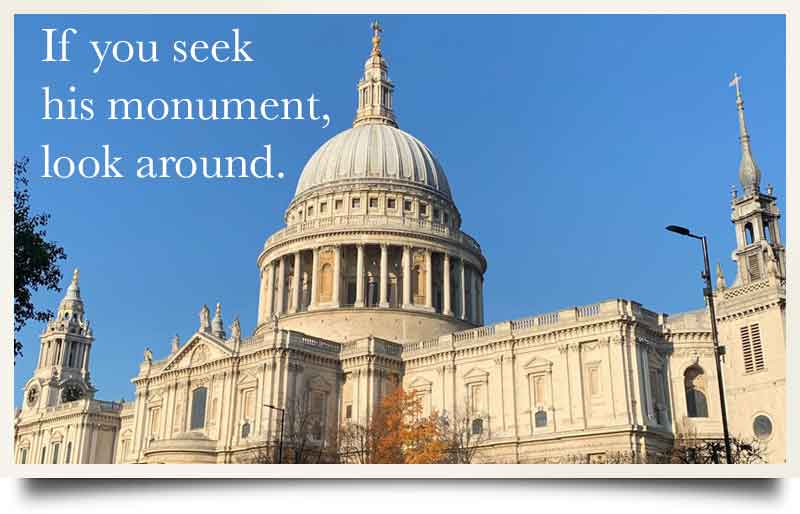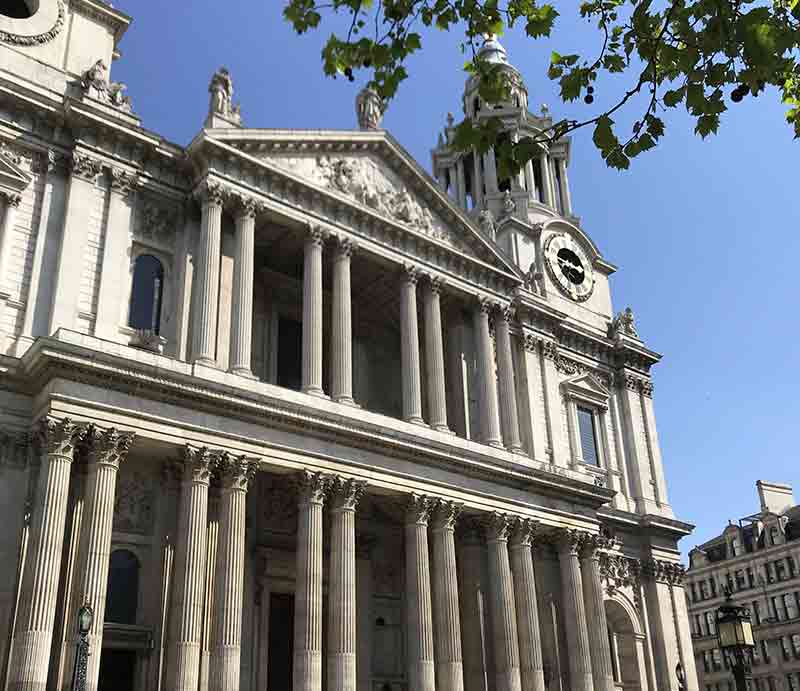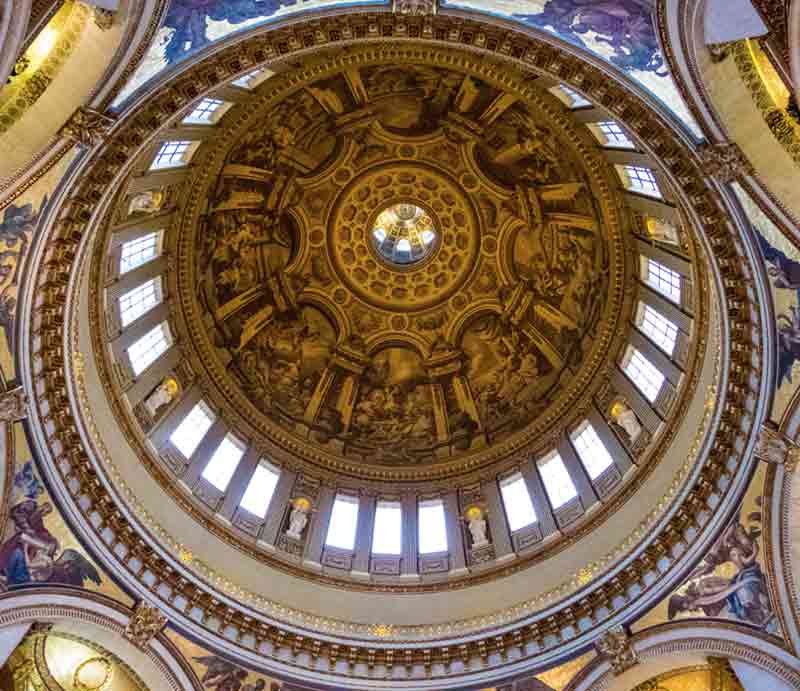Many great occasions have occurred at St Paul’s including the wedding of Lady Diana Spencer to Prince Charles. Thanksgiving services for Queen Elizabeth the II's Silver, Golden and Diamond Jubilees and the funerals of Admiral Lord Nelson, The Duke of Wellington and Sir Winston Churchill were also held at St. Paul’s.
St. Paul's Cathedral London Private Guided Tours

St. Paul’s Cathedral in the heart of the City of London is built on Ludgate Hill, one of the highest points of London. The current Grade I listed cathedral was built in the 17th century and replaces an earlier building that was destroyed by the Great Fire of London in 1666. Dedicated to St. Paul the Apostle its name goes back to the original church founded in the 7th century. The cathedral is held in great esteem by Londoners as it survived the bombardment of the Blitz and became a symbol of British strength during the war years.

Architecture
St. Paul's Cathedral was designed in the English Baroque style by the esteemed English architect Sir Christopher Wren who was heavily influenced by Renaissance trends in Italian architecture. The design caused great controversy when it was being built as it had one of the highest domes in the world and was considered by some to be too similar to St Peter's Basilica in Rome, which is a Catholic Church. Wren was commissioned to build many other churches within the City of London and also The Royal Hospital in Chelsea among other structures.

Incredibly the cathedral remained the highest building in London right up to 1967. The west façade is as imposing as the dome with its wide flight of steps, double-storey portico and two Baroque towers. The cathedral is extraordinary in that its crypt extends beneath the whole of the building due to structural requirements. The dome was 'topped out' by Wren's son, Chrsitopher Wren Jr. in 1708 after taking more than 40 years to complete.
St. Paul's Cathedral was completed in Wren’s lifetime. After his death in 1723 Wren was laid to rest in the Cathedral. His son had an inscription made for his father. The inscription reads ‘Here in its foundation lies the architect of this Church and City, Christopher Wren, who lived beyond ninety years, not for his own profit but for the public good. Reader, if you seek his monument look around you. Died 25 February 1723 aged 91’. The inscription is also inscribed on the main floor of the Cathedral directly below the central dome.
Heritage
The survival of St Paul's dome from attacks by the Luftwaffe during the war forms a strong part of wartime heritage.
In 1964 the St Paul’s Cathedral was packed with 4,000 people eagerly awaiting a seminal speech by Dr Martin Luther King Jr. The aspects of race and faith formed a single point as Dr King became the first black man and Baptist minister to preach at a statutory service in the Cathedral laying foundations for black heritage and the chance for Black History scholars and tour operators to celebrate this momentous occasion.

 Book Tour
Book Tour


